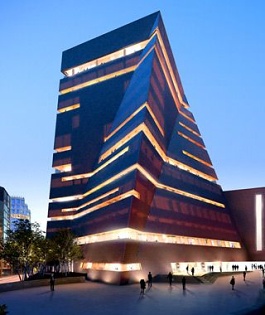
Sir Tate became wealthy thanks to sugar, and he donated the money to build a gallery
 |
In 1889, the patron decided to offer his collection of 65 contemporary Victorian artists to the British nation on the condition that a worthy building be constructed for the collection. Tate donated £80,000 for its construction. Thus, on the site of an old prison on Millbank's waterfront about a kilometer upstream from Parliament, a grand neo-baroque building was erected according to the plans of architect Sydney Smith. The new gallery officially opened on July 21, 1897.
In its early days, however, it was not the independent institution that Tate desired but was subordinate to the National Gallery. Its official name was therefore the National Gallery of British Art, although it was always referred to as Tate's. The gallery became fully independent only in 1955. Its most valuable pieces include portraits from the time of Elizabeth I, works by William Hogarth, Thomas Gainsborough, J. M. W. Turner, William Blake, Stanley Spencer, Henry Moore, and Francis Bacon.
Over the years, the collections expanded, and the Tate network of galleries today includes four buildings: Tate Britain (1897), Tate Liverpool (1988), Tate St Ives (1993), and Tate Modern (2000). In particular, the latter gallery, which arose from the bold conversion of the Bankside power station, attracts tens of thousands of visitors daily. The heart of Tate Modern is located in the original turbine hall, which rises over seven stories, allowing for the installation of truly large exhibits from contemporary artists.
Tate was from the village of White Coppice in Lancashire, where he was born in 1819 into a clergyman's family. He began as a shopkeeper's apprentice, and after a few years, opened his own store. Tate succeeded in business, and by the time he was 35, he already owned a chain of six shops. In 1859, he became a partner in a sugar refinery and decided to sell his grocery business. A decade later, he took control of the company and renamed it Henry Tate & Sons.
A significant year for Tate was 1872, when he purchased the patent for producing cube sugar. This allowed him to further expand his business; he built new sugar refineries in Liverpool and Silvertown near London. He was also known for thinking about good working conditions and leisure activities for his employees. Tate became a millionaire relatively quickly and then turned his attention to charity. He often provided donations anonymously, particularly supporting education and healthcare.
Tate was married to Jane Wignall, and they had three sons. He died on December 5, 1899, at the age of 80. He is buried in London.
The English translation is powered by AI tool. Switch to Czech to view the original text source.
0 comments
add comment
Related articles
0
06.07.2016 | The expanded Tate Modern gallery attracts crowds not only for its exhibitions
0
15.06.2016 | The Tate Modern Gallery significantly expands its exhibition space
0
14.10.2015 | Tate Modern will open the extension by HdeM in June 2016
0
19.07.2012 | Tate Modern opened exhibition spaces in the former tanks
0
08.09.2011 | Tate Modern will open spaces in former oil tank facilities










